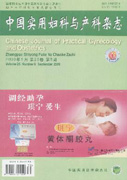|
Establishment and clinical application of fetal growth curve.
CHEN Jian-ping,SUN Lu-ming
2020, 36(8):
685-688.
DOI: 10.19538/j.fk2020080104
The review introduces the establishment of different fetal growth curves commonly used in the world and the applicable population,and compares their clinical value in screening for small-for-gestational-age fetuses as well as in predicting adverse perinatal outcomes. It is recommended to build suitable fetal growth curve to improve the screening sensitivity for small -for-gestation-age fetuses,help predict adverse perinatal outcomes, and provide guidance for the monitoring and management of pregnancy,which is of great significance in reducing perinatal death and the related complications.
|

